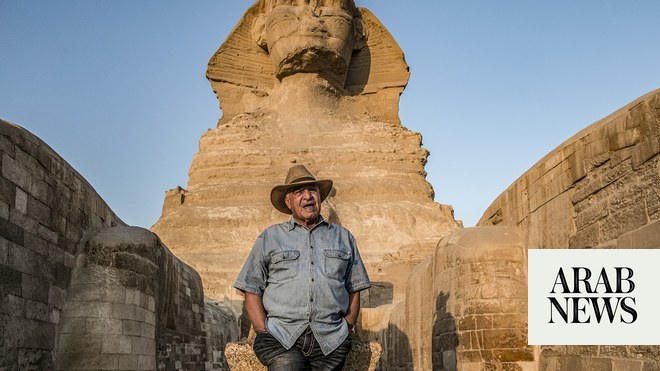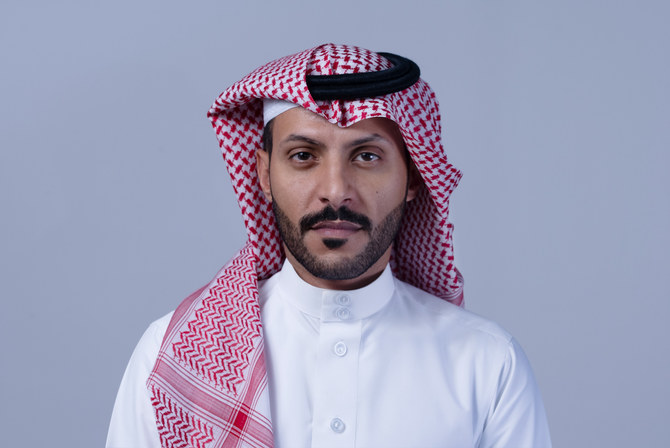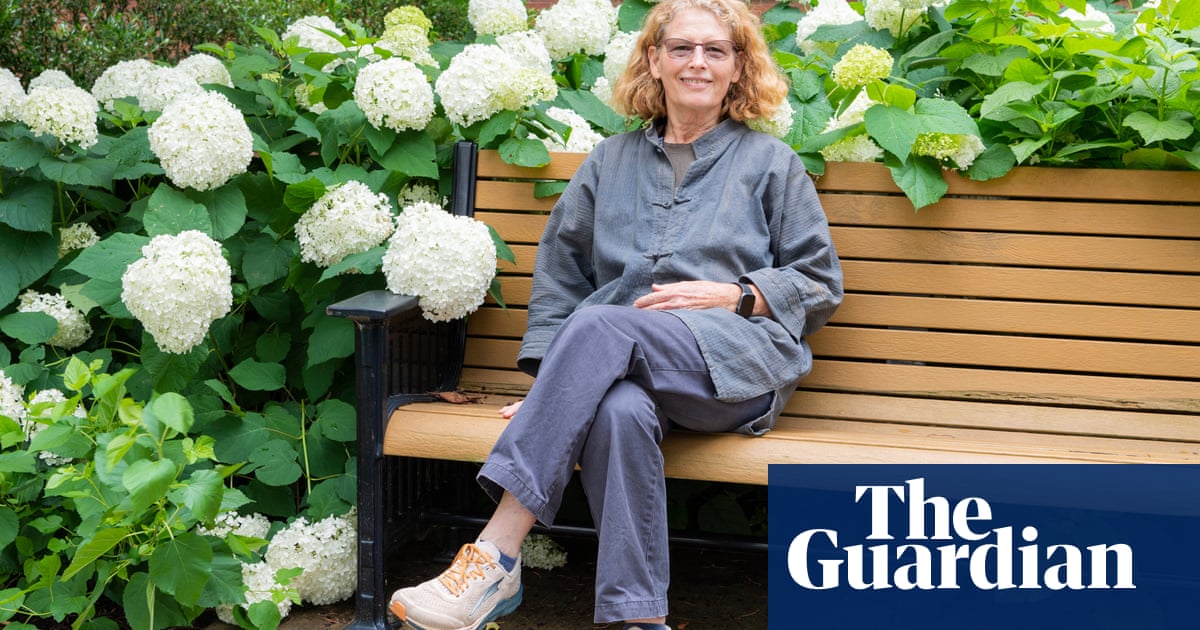
DUBAI: Dr. Zahi Hawass, the world’s most famous (non-fictional) archaeologist, has long been called ‘the real-life Indiana Jones.’ In the summer of 2023, however, that couldn’t be further from the truth. After all, in his new movie, “The Dial of Destiny,” Indy is shown to be ready for retirement at age 70, his adventures finally behind him. The 76-year-old Hawass, meanwhile, is only now on the precipice of perhaps his greatest discovery, with his legendary passion on full display in a new Netflix documentary that has once again made him a phenomenon across the world. The film is “Unknown: The Lost Pyramid” and its title is no mere tease. After a lifelong search, Hawass has found what appears to be a forgotten pyramid built 1,000 years before King Tutankhamun was buried in the Egyptian desert. Viewers are enthralled, and only days after its release, the film became the No. 1 movie on all of Netflix globally, an unprecedented achievement for a regional film.
“I’m amazed, honestly. I never thought that this film would be number one in the world, but I knew it was something special. I’ve had people tell me that they cried after watching it because, unlike ‘Indiana Jones,’ this is an adventure that is actually real,” Hawass tells Arab News.
While the central mystery is clearly enticing enough to draw viewers in, part of what makes the film so enthralling is Dr. Hawass himself. In one memorable scene, Hawass lifts the lid from an ancient coffin to discover a mummy unlike any he has seen before, and the glimmer in his eye feels powerful enough to inspire a whole new generation of archaeologists on its own. It was a moment just like that which inspired Hawass’ career in the first place. “I never wanted to be an archaeologist. I wanted to be a lawyer, but the moment I arrived in the dorms and looked through all those tedious books of law, I realized I hated it,” says Hawass. “I switched to the Faculty of Arts, and there they told me about a new department called archaeology. I said, ‘What do you do when you graduate?’ They said, ‘Become a translator.’ There was nothing else to aspire to back then for Egyptians.”
Hawass did not take to archaeology immediately. He received middling marks in his classes, graduated without honors, and took a job in the government’s antiquities department upon finishing — a position that was then guaranteed to all graduates of the fledgling field.
“I didn’t like any of my coworkers. I didn’t like any of it. I said, ‘No, I don’t want to be an archaeologist, this is a bad job.’ I tried to become a diplomat. I failed to become a diplomat. I came crawling back to the antiquities department, and the head ordered me to go work on an excavation, threatening to dock me 15 days salary if I refused,” says Hawass.
“One day, the workmen found a tomb, and they called me. I sat down, and they gave me a brush to clean the detritus, and there I found a statue of Aphrodite, the Greek goddess of love and beauty. It was in that moment that I found my love. I found my passion. And from that passion came everything,” he continues. In the decades that followed, Hawass became a towering figure in not only the field of archaeology, but in Egyptian culture generally. Powered by the same larger-than-life personality and indefatigable desire to understand the roots of Middle Eastern civilization that fuels him today, Hawass grew into something of a folk hero — at times a controversial one. In a battle that took decades, he successfully wrestled the keys to Egypt’s history away from an international community that had notoriously pilfered some of his country’s greatest treasures.
“I don’t fight, though. I defend myself. And I defend Egypt — beautifully,” says Hawass.
As he is keen to remind us, his work has inspired generations across Egypt to pursue a field that was once a dead end, building a thriving community that now follows him into the desert in search of the next discovery. He has turned Egyptology from a field dominated by Westerners into one wholly led by Arabs. While he’s remained resilient, that doesn’t mean, of course, that there haven’t been moments where things have gotten personally difficult.
“In 2011, at the height of the revolution, there were many people attacking me. The New Yorker magazine wrote 17 pages about me, half of it bad. I was traveling with Omar Sharif in the Dominican Republic when it came out. He said, ‘Why are you upset?’ I said, ‘Why are these people attacking me?’ Omar read the article, and came back and said, ‘I would like The New Yorker to write 100 bad pages about me, because if they do that it means you are excellent,’” remembers Hawass.
“Omar told me, ‘You have written more than 50 books. Stack your books up and they will be taller than the person attacking you.’ And so I didn’t get upset. That has been the key to my continued success — I just continued producing, lecturing, and working, until everyone had to admit that I was the one who made archaeology in my country. I walk the streets, and people want to take photographs with me because I made archaeology an adventure in their hearts,” he continues.
Hawass is not afraid of controversy — that’s part of the reason he wanted this film to be on Netflix in the first place, coming out so soon after Egypt was embroiled in a global firestorm over the Netflix documentary “Queen Cleopatra,” which postulated that the legendary Egyptian queen was a Black woman — an assertion Hawass himself publicly rejected in an Arab News guest column in April.
“Through it all, I defended Netflix in my country. Netflix is a platform, and platforms can show things that are bad and good. The best thing to do with a platform is make something better than the thing you are against. That’s what we did. Very few people saw the Cleopatra film, but now this film is being watched by millions and millions across the world. Now all we need to do is convince Netflix to do a part two,” says Hawass.
Even at 76, and having just returning from a 23-city lecture tour across the United States, the only thing that Hawass can think about is what is next: the next project, the next discovery. While they have paused excavation during the hot summer months, he’s is eagerly awaiting September 1, when he can once again don his trademark Indiana Jones hat and continue what they began in “The Lost Pyramid,” as he knows how close he is to even greater treasures, and the many mysteries they could solve regarding Egypt’s storied ancient civilizations.
“I’m never satisfied with what I do. Every year, I want to do more than I did the last. And it’s funny, because I’m not a person who ‘lives for today.’ I live in the past. That’s where my mind always is. The only scene I liked in the new Indiana Jones movie was when he traveled (through time) to ancient Syracuse, because that happens to me all the time. My mind is always back in ancient times.”












